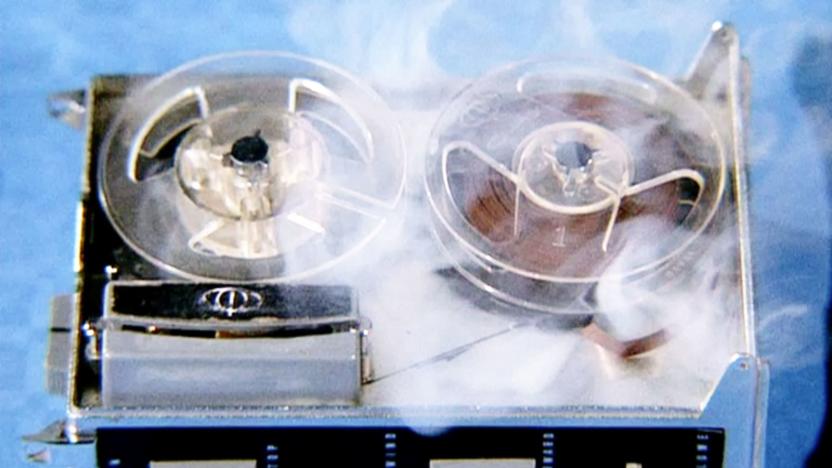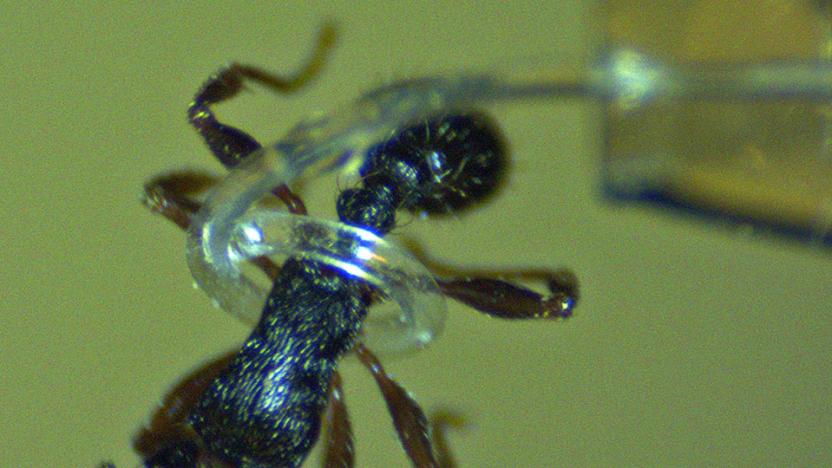iowastateuniversity
Latest

Six next-gen battery technologies
By Cat DiStasio We all love our battery-powered gadgets, but portable power cells can be devastating to the environment. Fortunately, recent developments have proven that greener batteries are coming in the not-too-distant future. Engineers are replacing toxic components with less harmful materials ranging from leaves to sugar. Other innovations on the rise look to nature to help make batteries last longer, perform better and leave less of a trace once they've been discarded. This gold nanowire-based battery, for instance, was created by accident and could make lithium ion batteries obsolete, while this single-use battery dissolves in water when its job is done, making it easier to reuse its components.

Self-destructing battery dissolves in water within 30 minutes
If spy agencies want to make self-destructing gadgets that leave no trace, their every component should be able to go kaput, including their batteries. Various research teams have been trying develop transient batteries for a while now, but according to a group of scientists from Iowa State University, their creation is the first one that's able to "demonstrate the power, stability and shelf life for practical use." The team's self-destruction lithium-ion battery can power a calculator for 15 minutes and dissolve in water within half an hour.

We're getting closer to real invisibility cloaks
We've been inching closer to real-life invisibility cloaks for a bit now, but going full on Harry Potter in the Hogwarts library is probably still a ways off. The latest advancement in metamaterial-based vanishing tech from Iowa State University guards whatever it's placed on from cameras, according to a paper published in Nature. The naked eye? Not so much. And even those cameras can't hide it from a human viewing a video feed, only other machines or perhaps radar. The researchers achieved this by embedding split ring resonators filled with galinstan into silicone sheets. Stretching those sheets is a form of tuning of sorts, and allowed the scientists to suppress certain radar waves up to about 75 percent. This type of tech could be used in a stealth fighter jet for example, as everything RF notes.

Microrobotic tentacles pick up bugs without squishing them
Some researchers develop soft robots, while others specialize on building tiny ones. This robotic tentacle by a team of engineers from Iowa State University, however, is both soft and tiny. In fact, that's a true-to-size ant encircled by the tentacle in the picture above and not a scaled-up version of the bug. Associate electrical/computer engineering professor Jaeyoun (Jay) Kim wanted to "pioneer new work in the field with both microscale and soft robotics." So, he and his team set out to make microtubes using a silicon-based material called PDMS, measuring 8 millimeters in length and less than a hundredth of an inch in width.

Iowa State robot available for ribbon cuttings, birthday parties, uprisings
Robots can travel in time, ride (stationary) motorcycles, and teach your children to disrespect you -- but rarely do they have any sense of ceremony. That's not the case with Iowa State University's still-nameless creation, who recently served as MC to open the school's new Electrical and Computer Engineering building. Said robot is comprised of two Barrett Whole Arm Manipulators stuck on either side of a torso, with a dual-Quickcam-equipped head that can be made to emote thanks to some simple eyebrows and lips. When not cutting ceremonial ribbons he can be found in the lab, twisting and dropping objects to learn about them, as shown in the video after the break. Next step: twisting and dropping lab technicians.[Via Plastic Pals]

Researchers create solar tie that charges, carries cellphone
There's certainly no shortage of folks working to incorporate solar cells into clothing and accessories, but a team of researchers from Iowa State University now look to have devised a way to make the wearable technology slightly more discreet, with them using digital textile printing to print fabric that matches the pattern of the solar cells. The solar cells themselves are then attached using a "liquid stitch" method, although that apparently presented its own set of problems, as the application of the cells made it difficult to tie a knot. As the researchers helpfully point out in thier paper, however, a clip-on tie would solve that problem. Combine that with the special pouch for carrying your cellphone, and you've got a combo that can't be beat.[Via textually.org]




